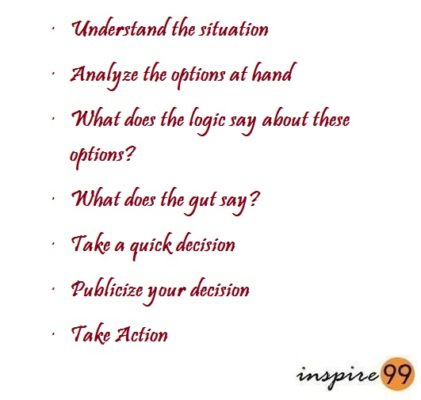It can be very useful for an entrepreneur to use Porter’s Five Forces analysis. It gives a good understanding of the competitive environment in which you are operating and identifies areas of focus. By analyzing each of the five forces, you as an entrepreneur can gain insights into the strength of your position in the market and the level of competition you face. It helps you make better strategic decisions and position your business for long-term success.
What is the porter’s 5 forces?
Porter’s Five Forces is a framework developed by Michael Porter, which helps businesses to analyze and understand the competitive environment they operate in. The framework identifies five competitive forces that impact an industry’s profitability. In this article, we will talk about using porter’s 5 forces in a startup as an entrepreneur.
- Threat of new entrants: The extent to which new competitors can enter the market and compete with established businesses.
- Bargaining power of suppliers: The influence suppliers have on the price and quality of inputs they provide.
- Bargaining power of buyers: The influence customers have on the price and quality of products or services they buy.
- Threat of substitute products or services: The extent to which alternative products or services can replace the industry’s offerings.
- Rivalry among existing competitors: The level of competition among businesses in the industry.
The 5 key dimensions of porter’s 5 forces are:
Video explaining porter’s 5 forces:
Porter’s 5 forces examples
I asked Chatgpt to produce a few examples of using Porter’s 5 forces. Since it is a macroeconomic landscape, they can be used as a great source to start our analysis. These examples illustrate how Porter’s Five Forces framework can be used to analyze the competitive dynamics and attractiveness of different industries. Keep in mind that the specifics of each industry may vary, and the forces may evolve over time.
Retail Industry
- Threat of new entrants: High due to low barriers to entry, leading to intense competition.
- Bargaining power of buyers: High due to the availability of numerous retail options and price-sensitive customers.
- Bargaining power of suppliers: Low to moderate, as large retail chains can negotiate better terms with suppliers.
- Threat of substitute products: High due to the availability of online shopping and alternative retail channels.
- Competitive rivalry: High due to the presence of numerous retail competitors.
Pharmaceutical Industry
- Threat of new entrants: Low due to high research and development costs and strict regulations.
- Bargaining power of buyers: Moderate to high due to the concentration of buyers (such as healthcare systems and insurance companies) and their demand for lower prices.
- Bargaining power of suppliers: Moderate to high due to the limited number of active ingredient suppliers and their ability to control prices.
- Threat of substitute products: Low to moderate as pharmaceuticals often have limited substitutes for specific medical conditions.
- Competitive rivalry: Moderate due to the presence of several pharmaceutical companies competing for market share.
Fast Food Industry
- Threat of new entrants: High due to relatively low entry barriers and the potential for new concepts and innovative offerings.
- Bargaining power of buyers: Moderate to high due to the price sensitivity and the availability of various fast food options.
- Bargaining power of suppliers: Moderate to high due to the concentration of key suppliers and their ability to influence prices and quality.
- Threat of substitute products: Moderate due to the availability of alternative food options and dietary preferences.
- Competitive rivalry: High due to the presence of numerous fast food chains competing for customers.
How to use Porter’s 5 forces in a startup
Porter’s Five Forces can be used by startups to analyze the competitive landscape and make strategic decisions. Here are the steps to use Porter’s Five Forces in a startup:
Identify the industry: The startup needs to identify the industry it is operating in.
Define the competitive forces: The five forces are the threat of new entrants, bargaining power of suppliers, bargaining power of buyers, threat of substitutes, and intensity of competitive rivalry. The startup needs to analyze each of these forces to understand the competitive landscape.
Assess the threat of new entrants: This involves analyzing the barriers to entry in the industry and the likelihood of new entrants. As a startup, you need to assess the unique selling proposition that helps you stand out in the market.
Evaluate the bargaining power of suppliers: This involves analyzing the suppliers’ power to influence prices and quality of inputs. Startups need to evaluate if they have multiple suppliers and alternative sources of inputs.
Analyze the bargaining power of buyers: This involves analyzing the buyers’ power to influence prices and quality of products or services. Startups need to evaluate if they have a diversified customer base.
Evaluate the threat of substitutes: This involves analyzing the likelihood of customers switching to alternatives. Startups need to evaluate if they have a unique value proposition that cannot be easily substituted.
Analyze the intensity of competitive rivalry: This involves analyzing the competition in the industry. Startups need to evaluate if they have a unique value proposition that can help them stand out in the market.
Make strategic decisions: Based on the analysis of the five forces, startups can make strategic decisions about their business model, pricing strategy, marketing strategy, and competitive positioning.

Pingback: 5 Easy Startup Businesses for an Entrepreneur - Inspire99
Pingback: Dealing with a risk of failure in the startup - Inspire99
Pingback: 5 Reasons to read The Infinite Game for a startup - Inspire99